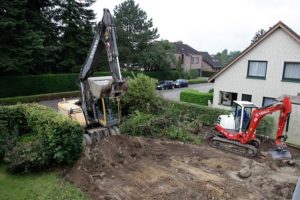GPR (or ground-penetrating radar), being a non-destructive method of subsurface testing and imaging, has countless applications. As it creates images of what’s beneath the soil, it can be used to identify buried utilities, structures, or other items. It can also be used to identify issues with the subsoil and help to paint a more thorough picture of the structural integrity and condition of the land, making it an extremely helpful investigative tool for construction, excavation, and land management. Here’s why and when GPR will be the most beneficial to you during your construction project.
Affordable
GPR is a great option for locating utilities or other structural anomalies on a budget. Especially combined with other methods of identification (such as soil probing and consulting older maps or construction as-builds), it can allow you to locate structures that you need to be aware of or work around, without expensively excavating entire blocks of land or accidentally destroying any cables or utility lines. GPR equipment is also less intensive and usually less expensive than large excavation equipment.
Depth and Frequency
When deciding whether GPR would benefit your project, note how deep into the ground you need to see. The frequency of the equipment you will need directly impacts what you will or will not be able to see. Low-frequency equipment, for example, will penetrate deeply into the ground but produce low-resolution images. This can be useful for identifying a large, deep water line that would be easy to identify by comparing a low-resolution image to a map. High-frequency equipment, on the other hand, will produce high-resolution images in the shallower subsoil. This would be more useful for identifying structural problems in concrete such as early buckling or cracking due to shallow roots or erosion.
Soil Conductivity
Consider soil conductivity when deciding whether to use GPR in your project, as this will affect your data. The higher the moisture content in the soil, the better the conductivity, therefore resulting in better readouts. Saturated soils like clay and shale make for much better data than dry soils like sand or granite sediment. Conducting your GPR a day or two after a rain will help to produce better readings in dry soil.
Choose Concrete Visions for All Your GPR Needs!
Concrete Visions has over 12 years of experience and expertise in concrete scanning and we know how to detect any problems lurking beneath the surface. We use ground penetrating radar accurately and expertly and are familiar with many other methods that can be used when appropriate like concrete x-ray and electromagnetic conductivity. We are also very familiar with the latest construction safety techniques and train all of our workers to do their work quickly, accurately, and safely. If you would like to learn more about how we can help you, give us a call at (410) 766-2210 or visit us online. For more articles and tips, follow us on Facebook, Twitter, LinkedIn, and Google+.

